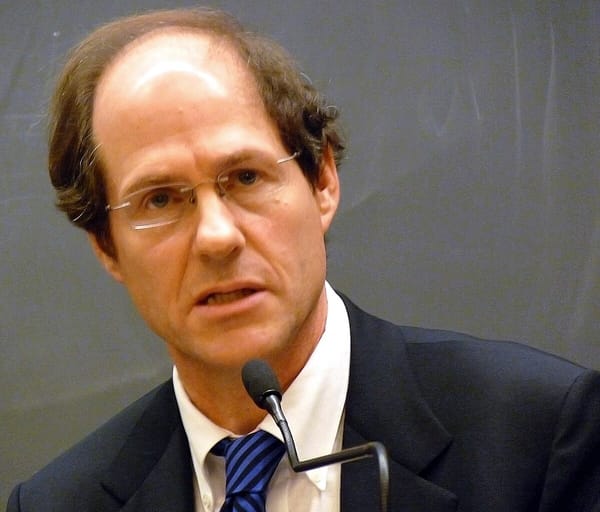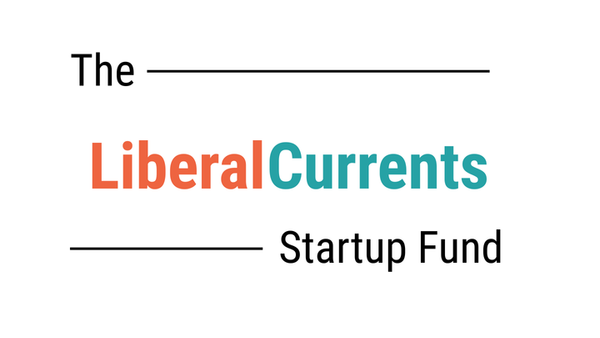Attacks on Higher Ed and the New Illiberal Electorate
The right-wing destruction of American higher education institutions is a strategic move. Liberals need to answer with a strategy of their own.

The political truism that conservatives hate education because educated people don’t fall for conservative politics is—like “orange man bad” and “it’s all vibes”—startlingly accurate.
The right-wing destruction of American higher education institutions is a strategic move. In just the last month alone, several graduate students have been extralegally detained for the crime of having opinions and several of the nation’s most elite universities have lost or risk losing federal funding over essentially imaginary offences that, again, amount to the crime of having an opinion. While Harvard may have called this administration’s bluff for now, other schools have neither the resources nor the administrative backbone to do the same—though 150 seem inclined to try. The dismantling of the Department of Education, which cannot actually be dismantled without an act of Congress, is occurring via a process familiar to the average university faculty member: “it’s not that you’re fired legally, it’s that we’re paying you less and your working conditions are getting worse.”
The explanation in left and centrist circles is the generally correct but very shallow notion that, without these institutions, the American voter will somehow be less well-informed and easier to manipulate. Voters without college educations are markedly more conservative. College is frequently the place young people first become politically engaged.
The problem is that most of these explanations skip past the mechanical processes—the how—of this attack on education and papers over the length of this attack: as any employee of a higher education institution can attest, this isn’t new, it’s just an escalation.
Understanding this matters because any path to a liberal American Reconstruction runs through higher education, and any sustained future liberal democratic society depends on the creation of liberal, democratic citizens. Higher education, along with other civil society institutions like unions, municipal governments, hobby organizations, and third spaces, are where liberal democratic citizens are made. Attacking the processes for citizen-creation is a deliberate strategy for destroying the concept of civic life, and thus reducing people from citizens to employees and expendable bodies.
With the possible exception of labor unions, higher education is the softest target for these attacks, and so they are a priority in the current administration’s efforts to create an illiberal society that it can control indefinitely. A society of low information voters activated purely by emotion can be managed by whomever owns the most media—and the private media industry has, as a result, declared their allegiance in favor of the guy reinforcing their own eternal and unquestioned power.
For higher education in the United States, these destructive processes have been a long time coming. The processes of financialization and adjunctification in U.S. universities have made those institutions more undemocratic, transactional, and unstable—and these processes have been going on since at least the 1980s. To be sure, universities were never fully democratic institutions—elite access and elite control were the primary modes of governance until well after WWII. However, the reduction of several of this country’s largest institutions to “hedge funds with schools attached,” with growing endowments entirely decoupled from the activity of running a school, has eroded their democratic features and functions. Even state-run colleges now typically operate with a large endowment fund and under an unelected board of non-academic directors whose primary qualification is wealth or political cachet and whose decisions are beyond appeal. This has produced an internal culture of risk-aversion and shareholder maximization with predictable results: cuts to “unprofitable” (humanities and arts) degree programs, pools of part-time faculty replacing full-time professors, and the prioritization of institutional brand safety over student expression, education, and research. Most Americans, even well-informed ones, are hardly aware this has happened and react with incredulity when told about it.
The policies of the second Trump administration—by threatening funding, demanding control over internal policy, and inventing more “ideologically diverse” leadership by pushing out tenured faculty—further degrade the capacity of higher education institutions to enable the creation of professionalized, ideologically democratic citizens. The effect of the financialization of higher education, along with constant cuts to courses and programs that specifically engage in what I term “liberal subject formation”—teaching teenagers and young adults how to be citizens by telling them what it means and letting them practice—is that the machines we use to make citizens are unable to complete that work.
If you were an authoritarian who is fundamentally hostile to democratic ideals, it makes strategic sense that you’d want to annihilate the last educational environment where future citizens can practice civic participation. My peers who complain that colleges feel more like high schools are not complaining that the students are less intelligent; they’re complaining that more and more of the job of liberal subject formation is shifting later in the educational timeline, as each year teenaged students are free to practice it less and less. The skills that practice produces—“maturity” or “emotional resilience” or “critical thinking,”—are fundamental qualities of liberal personhood described using the language of psychology: freedom and civic engagement and resistance to untruth. This isn’t entirely our fault—our whole society is so predicated on liberal personhood that we forget that it has to be produced institutionally.
The degraded capacity of our civil society institutions to produce ideologically democratic citizens means that the rhetorical strategies liberals might use to win over the electorate need to change, and for the most part they currently have not.
So, what do we do?
The truth has no inherent strategic advantage
The problem is that systematic, scientifically-informed indoctrination is possible, and the institutions of traditional civil society—like schools, universities, professional organizations, unions, et cetera—aren’t doing it.
In fact, the negative polarization induced by the right-wing conspiracy theory of educational indoctrination has caused left- and normie-democratic politics to turn against an entire essential domain of political life: political education. Right wing politics, by not suffering under the fantasy that every free person is immune to propaganda, has fully embraced every available tool, however inhumane, to indoctrinate the political public at scales that would make Lippman and Bernays dyspeptic. The constant right-wing confession-accusations of indoctrination, which have now reached all the way from kindergarten library visits to the deportation of graduate students with inconvenient opinions, has negatively polarized liberalism away from an unpleasant but required truth: just because liberal politics are humane and validated by material reality does not confer an inherent advantage in public discourse. The truth, in other words, does not have any sort of automatic persuasive advantage over untruth.
To make matters worse, we’ve collectively subscribed to a fantasy that accelerates this problem: the idea that the population of our liberal democracy, which we assume is armed and capable of critical thinking, is being produced by those institutions designed to produce them.
Those liberal democratic citizens, armed for debate, discourse, critical thinking thanks to education and exposure to civil society and media, do not constitute most of our political audience anymore, if they ever did. The way that audience was produced—through the educational indoctrination into capital-L Liberal ideology, packed up in civics and history and English classes and the like—has all but ceased. The American education system, and other civil society institutions, are no longer fully able to do this work because they have been systematically hollowed out by right-wing funding cuts and outright socially engineered intimidation.
Anecdotally, all it takes to deradicalize one teenager brought up in the most ideologically-hermetic illiberal circumstances is a goofy English teacher who shows them the value of liberal multiculturalism by kindly but persistently challenging them. But this process doesn’t really scale, unless a future liberal administration can fund tiny class sizes and millions more humanities teachers—a Tim Walz for every disaffected teen. The reduction of English and writing classes to writing-as-a-market-skill-only (to say nothing of literature, history, etc.) means that young adults do not get almost any guidance or sandbox-practice in civic participation or public rhetoric. This explains ongoing liberal issues, like the death of “civic virtue,” the expansion of conspiracy theory as a dominant mode of belief, the growth of the low information voter, and the decline in both a demand for, and comprehension of, competent political rhetoric.
College-educated women and minorities across the educational spectrum are the only reliable left- and center voters because there are very clear material threats to their existence posed by illiberal and right-wing politics. Voters with less concrete skin in the game, who need to opt-in to liberal politics, are not showing up because the right-wing media universe is doing indoctrination and there’s no systematic countereffort.
So what do we do?
The first step is to abandon the theory that your audience is already composed of people who are prepared to be citizens in a multicultural democracy with the ideological tools and inclinations to match. You can’t win an election by appealing only to the folks who took A.P. U.S. History in high school and decided to take an English elective in college.
The second step is to abandon the ideological revulsion to “indoctrination” or “propaganda” which is entirely the result of schismogenesis—negative polarization. The right has seized the means of ideological production while we were afraid of the grease getting on our hands, because they convinced us the machines themselves were dirty and illiberal. “If you’re so right and true, then you don’t need to convince anybody!” is a losing proposition. Advertising and propaganda are authoritarian in feeling because it was authoritarians who, in living memory, have abused them.
Once we accept that, one, the liberal democratic subject production pipeline has been degraded through long-term attacks on education and thus, two, that our audience’s liberal ideological toolkit is underdeveloped or even absent, there are some clear implications for how we advocate for liberal politics so that we can win elections.
One: Stop surrendering third spaces in advance
The hand-wringing about Bluesky being a leftie haven is based on a ridiculous notion that a coherent and complete conversation must include incel Nazi weirdoes “for balance.” We’re supposed to have our meeting places—the right wing certainly has their own. Even in a more multi-polar discourse environment, the enforcement of shared ideological foundations is not illiberal: we do this every time we select a language to speak or an example to use—it’s human, and the first principle of liberal ideology is to accept humanism and reject anti-humanistic ideas. To riff on Timothy Snyder here: stop surrendering your spaces in advance.
We cannot scatter into a series of Discord bunkers while the fascists party in public view: we need large public spaces. Bluesky is one of them, for better or worse. Likewise, if publications ideologically aligned with us get dismantled, we must be immediately ready with new ones. Video game journalists have known this one for years: sometimes you and your friends have to make a new publication. Liberal Currents is a very good example of this.
Two: You cannot keep your powder dry
If you accept that indoctrination and ideology are real things, then shaping public belief in a democracy is the only battleground that matters in terms of material outcomes. Others have argued this at length, so I won’t belabor the point here, but it essentially boils down to the idea that poll-chasing is a losing strategy. While we do not, under any circumstances, have to hand it to the right-wing culture warriors, their strategy of turning everything into an opportunity to promote their ideological position works.
The strategy of Senate Democrats to save their efforts for “important” fights is bad both optically and strategically. Liberal politics are getting salami-sliced to death while our representatives wait for the climax of the plot to fall in their laps. Illiberal politics is designed around a strategy of attrition—there won’t be a climactic battle. You have to make one by arbitrarily choosing a line and sticking to it.
The recent calls for Democrats who fight is not just the die-hard liberals seeking out emotional catharsis. The attentional environment rewards both competence and volume: people consistently favor politicians who are annoying, loud, and present. Nobody is going to remember if the loud Democrat was wrong a few times—they just remember that this politician was loudly correct when it mattered. Demure symbolic resistance isn’t a good strategy especially if you only do it a few times, since that amplifies every failure. Instead, the risk-reward ratio strongly favors being loud and everywhere.
Three: Adopt diversified saturation strategies
Liberal ideology and its representatives must turn the illiberal doctrine of “flooding the zone” against itself. Since illiberal forces are currently in power, they flood the zone with boring proceduralism that, despite our friends on Bluesky freaking out about each fresh horror, the average voter tunes out. You have to tell people to oppose illiberal policy by publicly, and loudly, opposing them yourself. The only way to normalize an ideology is the way illiberalism did it: be on every platform, having an opinion about everything, loudly and all the time. It needs to reach into every lifestyle and interest area because that’s how something normalizes—it must feel inevitable. Illiberal forces have done this quite well.
It’s unsurprising that the most able practitioners of what I’m describing include Minnesota Governor and VP candidate Tim Walz—the midwestern high school civics teacher knows how to keep teenagers engaged, and lots of people are still politically teenagers thanks to the education issues I discussed above. AOC is notoriously good at this too: her youth, energy, and possibly even the tonality of her voice are strategic advantages in a “fight everything everywhere” battle—advantages she deployed recently in Denver, Tucson and elsewhere. The Democratic Party’s media consultancy team should probably include more middle-aged high school teachers and former waitresses who know how to fill, and control, a room.
Several of the suggestions I’m about to make have already been echoed in the liberal social media environment. The core mechanism behind those intuitions is correct: the attacks on education aren’t part of the problem, they’re the root of it. They’re the enabling condition for illiberal ideology because anybody educated with liberal values would flatly reject illiberal politics as inhumane, ineffective, and weird.
The reliberalization agenda
In the event of a future liberal reclamation of political power in the United States, we must have “ready-to-go” strategies to prevent antidemocratic backsliding. This was, yet again, an advantage the Trumpian illiberal forces had: they designed policies ahead of time and knew how to implement them rapidly. Liberal American Reconstruction is likely to be contested, and so we must also be ready to move on day one.
Higher education being the rear guard against illiberalism, any future liberal administration is going to need a plan to roll back the destruction of American higher education. It is difficult to imagine this without an almost New Deal-sized reconstruction effort, but there are a few specific domains of policy a Reconstructionist should consider.
One: De-financialization
The for-profit education model cannot work, and does not work, to espouse liberal ideology. The financial deregulation that allowed, for example, public universities to operate as if they were private hedge funds, hiding their multimillion-dollar endowments where the faculty and staff can’t spend them, must end and then quickly be reversed. Financial regulations about endowment placement, size, and control are a priority here, as is government intervention to fight a prevailing market force: the tendency to buy educational expertise at lower costs. Past proposals, including having a legislatively fixed ratio of permanent to part-time faculty in any publicly funded higher educational institution, are good places to start. Mandated professor and staff unions—a mainstay in primary and secondary education but a bit rare in colleges and universities—are another. Educational institutions have to be more durable even if that makes them less fiscally efficient.
Two: Institutional governance
A key component of the above goal is large enough to be its own domain: how higher ed is governed. These issues are thornier, but for what it’s worth, schools should probably be run by people who have worked in schools. Most American academic institutions have democratic governance standards at the unit and department levels, but few elect their own boards of directors or president. At the very least, governors should not be able to dissolve and re-appoint state college boards at will. The question is mainly what a more democratic mode of running these places would look like, and how they can be firewalled from electoral abuse and demagoguery.
Three: Humanization
Perhaps the most niche of the four policy areas here is the one closest to my own heart: the reconstruction of the Humanities as a subject area. I could make the argument in financial or concrete terms—these skills are valuable, resistance to manipulation is a marketable skill, and so forth—but the fact of the matter is that school is a third space for acculturation and subject formation, not just technical skills. Without a diverse body of adults and mentors, kids and young adults cannot position themselves in relation to others in a free society. Without subjects and spaces dedicated to explicitly discussing that process, it won’t happen optimally. Without training in how to access and address the thoughts of other people, democratic self-actualization isn’t feasible. Placing the burden for that education in a general community or sidelining it to personal time is not pedagogically sound or ideologically wise. In the absence of a trained and engaged audience, persuasion gives way to manipulation.
Also, if we want to be patriotic about it, propaganda and persuasion have been central to American power: cultural power and convincing our enemies it was wrong to stand against us in the first place are how the American-led rules-based international order was created in the first place (along, of course, with other, more kinetic, academic achievements). We are, materially, safer and richer if people know how to argue and how to interpret other people’s textual and artistic activity. As part of the process of liberals reclaiming patriotism, this is a pretty easy one: America is a society of talkers.
Four: Primary and secondary educational policy enforcement
The United States, ironically, needs the imaginary version of the Department of Education that right-wing demagogues hate. In reality, the current Department of Education is quite a lot like the Department of Energy or the ATF—despite the broad name it has a very specific series of tasks. The Department of Education deals with student loans, state public school funding redistribution, special education funding, and student civil rights. Despite the talking points in the right-wing media universe, it has little to no control over curriculum or classroom-level decisions—dissolving the department is basically just a roundabout way to re-enable school segregation. I argue that a new Department of Education should be the thing these guys fear: a federal agency in charge of ensuring your local school board doesn’t tell kids that democracy is bad or ban books about how queer people exist. A future Department of Education with the power to enforce consequences on behalf of the citizens—and future citizens—whose rights it protects might, for example, criminalize the abuse of local school board power to ban books on first amendment grounds.
These four policy domains can be read as slotting directly into Samantha Hancox-Li's Roadmap for American Reconstruction, published here a few weeks ago, and as a symptom of what she termed the end of the Long 90s more recently. In service of that roadmap’s ultimate goal, policies and institutional talent must be prepared to reconstruct a U.S. higher ed system that is capable of liberal citizen creation at scale. We must identify the attacks on higher ed for what they are, understand and deploy new persuasive tactics given the long-term consequences of those attacks, and be ready to use any institutional power to close that vector of attack on our democracy by future bad actors. Continuing to think of the issues individually and accepting the reduced capacity of higher education as business-as-usual is to deny the reality of the ideological arms race currently underway.
In the end, we either do the schooling—or we get schooled.
Support Opposition Media
Featured image is Stump Speaking, by George Caleb Bingham





